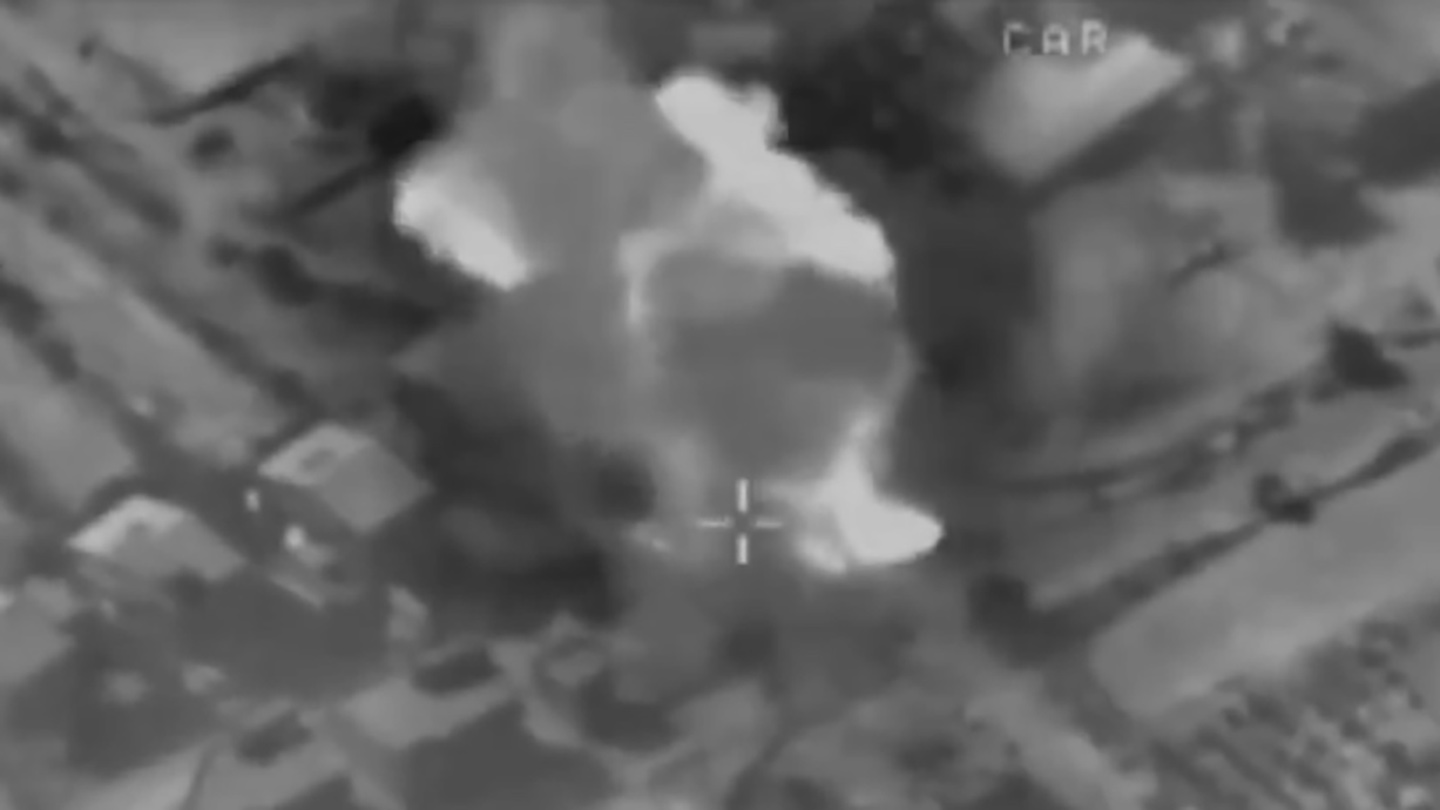Cross-border fighting between Hezbollah and Israel continued to heat up ahead of an expected massive attack by Iran and its regional proxies. They are vowing vengeance for two recent assassinations, one on July 30 of Hezbollah military commander Fuad Shukr in Beirut, and the other on July 31 of Hamas political leader Ismail Haniyeh in Tehran.
Hezbollah said it carried out several attacks, including hitting Israeli military bases. The Lebanese militant group also said at least five of its fighters were killed in an Israeli airstrike. Israeli officials said at least 17 people were injured so far in waves of Hezbollah drone strikes on northern Israel, according to official Israel Army Radio. Those attacks are continuing, the outlet reported.
Video and images emerged on social media of the Hezbollah drones flying overhead and exploding on the ground.
In one event on Tuesday, several Israelis were injured, at least one critically, by what the IDF now says was a malfunctioning air defense interceptor. Described in some media reports as fired from an Iron Dome launcher, it struck a heavily traveled roadway near the northwestern Israel city of Nasariya.
“Following the report earlier today regarding a fallen hostile aircraft on Route 4 to the south of Nahariya, an initial inquiry indicates that an interceptor missed the target and hit the ground, injuring several civilians,” the IDF said on Telegram. “The incident is under review.”
Route 4 is a major Israeli coastal artery from the Lebanese border south to the Gaza border.
IDF initially said that “a number of hostile UAVs were identified crossing from Lebanon. One of the UAVs was intercepted. Several civilians were injured to the south of Nahariya during the incident.”
“A woman was wounded by shrapnel hundreds of meters away from the impact on the highway, and at a separate location, another five people were lightly hurt by a blast, according to medics,” Several” of those drones also hit “the Nahariya area,” Times of Israel reporter Emanuel “Manny” Fabian reported on Twitter.
That incident outraged at least one Israeli, who complained about the Israeli government’s response to the ongoing Hezbollah attacks.
“Are we guinea pigs?” Avi Ezran, an eyewitness who was hit by shrapnel, asked a reporter from Israel’s N12 news outlet. “Everyone here is on pills, you can’t live like this. The north is disintegrated and this government has failed.”
There were other Hezbollah attacks all along the region just south of the border
Hezbollah said it struck the headquarters of the Golani Brigade and Egoz Unit 621 in the Shraga barracks, north of Acre “causing confirmed casualties,” according to the L’Orient Today news outlet. The Lebanese militant group also claimed it targeted “a deployment of Israeli soldiers at the Abu Dajaj hills near Zarit barracks…with several artillery shells,” the publication reported.
The militant group also claimed at least five of its fighters were killed by an Israeli airstrike on Mayfadoun in southern Lebanon near the city of Nabatieh. The Israeli Air Force released a video of that strike.
Iran’s official Press TV news outlet released images of the aftermath of that attack.


Hezbollah leader Sayyed Hassan Nasrallah on Tuesday issued new threats against Israel.
“Our response will come and it will be strong, influential, and effective,” Nasrallah said during a memorial for Shukr in Beirut, according to the Telegram channel of the Hezbollah-affiliated Al-Maydeen news outlet. “There are still days, nights, and battlefields between us and them.”
Nasrallah chided Israel for being weak and seeking help from the U.S. and its allies. He also called on Iranian proxy groups in Iraq and Syria to join a coordinated attack that will likely include not just Iran and Hezbollah, but the Houthi rebels in Yemen as well.
Shortly before he gave his speech, Israel delivered a message of its own, with Israeli Air Force combat jets creating sonic booms over Beirut.
Ahead of that looming attack, Russia delivered unspecified advanced radars and air defense systems to Iran, according to The New York Times.
As we reported on Monday, Sergei Shoigu, the Secretary of Russia’s Security Council and former defense minister, visited with Iranian leaders in Tehran. During that meeting, he conveyed a message from his president. Vladimir Putin urged Iran’s Supreme leader Ayatollah Ali Khamenei “for a restrained response to Israel’s suspected killing of the leader of Hamas, advising against attacks on Israeli civilians,” Reuters reported on Tuesday. The outlet cited two senior Iranian sources.
Iranian officials also “pressed Moscow for the delivery of” Russian-made Su-35 “Flanker-E” combat jets, according to Reuters. You can read more about that potential deal and how Iran has supplied Russia with drones to fight Ukraine in our deep dive here.

Amid the ongoing umbrage in the Middle East over the Haniyeh and Shukr assassinations, a federal indictment was unsealed in Washington D.C. charging an Iran-connected man from Pakistan with seeking to kill former President Donald Trump and other officials.
The U.S. is accusing Asif Merchant, 46, of going to New York City and working with a hit man to carry out the assassinations in late August or early September, according to charges filed by federal prosecutors in Brooklyn, New York. The would-be hitman turned out to be a law enforcement officer. This plot was what triggered the Secret Service to increase security for Trump before the assassination attempt on him last month in Pennsylvania, according to CNN.
While Israel and Hezbollah exchanged blows, the bloody fight in Gaza continued unabated.
Several Israeli troops were injured and a humanitarian road was shut down after anti-tank missiles were fired toward them during operations in Rafah, ABC News reported. Meanwhile, in the occupied West Bank, “Israeli forces killed at least 12 Palestinians as they launched several raids in different locations, according to Al Jazeera.

As another day passes, the world remains on edge over what might happen next.
Contact the author: howard@thewarzone.com
